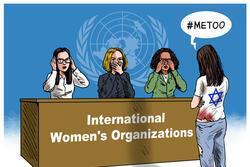Bangladeshi Factories
New York Times Article about Bangladeshi Factory Inspections (Modified)
Background: On April 24, 2013, an eight–story clothing factory called Rana Plaza collapsed in Dhaka, Bangladesh. Over 2,500 people were injured and 1,129 perished in the disaster, considered the deadliest garment factory accident in history. Though the factory was overseas, several American brands were associated with the factory including Walmart, J C Penney, as well as the Swedish retailer H&M.
DHAKA, Bangladesh—Not even two months after the collapse of the Rana Plaza factory building claimed more than 1,100 lives, a team of engineers arrived to assess another factory in the center of the capital. It was named Al–Hamra Garments, and it was one of hundreds of factories undergoing post–disaster inspections as Bangladesh sought to prove that its critical apparel industry was safe.
But this inspection, conducted in mid–June, was startling. The two engineers discovered that the eight–story factory was partly propped up by temporary cast–iron pillars placed on the ground floor. Several original beams and columns were cracked or disintegrating. And the factory was open for business, with more than 1,000 workers producing clothing for a Bangladeshi apparel conglomerate whose customers include Walmart and Gap.
“Considering the severity of the building condition it is recommended that the use of the building be discontinued immediately,” the two inspectors, professors at the country’s top engineering college, concluded in their preliminary assessment report.
Yet last Saturday, nearly two weeks after the inspection, Al–Hamra Garments was still open. “The factory is fine,” said an administrator, Shafiul Azam Chowdhury, on Saturday afternoon. He said two other inspection teams had concluded that the temporary propping made the building safe enough to continue operations during structural repairs.
Julfika Ali Manik contributed reporting.
Source: Yardley, Jim. “After Disaster, Bangladesh Lags in Policing Its Factories.” The New York Times. July 2, 2013. Retreived on January 10, 2015 from http://www.nytimes.com/2013/07/03/world/asia/bangladeshi-inspectors-struggle-to-avert-a-new-factory-disaster.html?pagewanted=all&_r=1&
Discussion Questions about Bangladeshi factories
- What situation is this article describing? What are the issues that factory owners and workers need to address?
- How is this story similar to or different from labor issues in New York City in the early 20th century?
- Think back to the traditional Jewish text from Mishnah, Bava Metzia 7:1 that talks about treating workers according to the “custom of the land” (minhag hamakom)? What does this article teach us about the “custom of the land” in Bangladeshi garment factories in 2013?
- As American citizens, do we have a responsibility to change labor practices in other countries? Why or why not?


